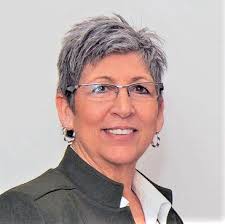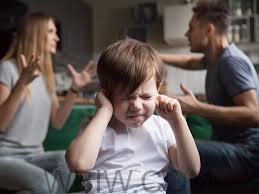
LAWRENCE CO. — Domestic violence remains a problem for residents in Lawrence County. As of last year, 33 percent of crimes reported to the Lawrence County Prosecutor’s Office were domestic violence-related.
Kim Burgess, executive director of United Way of South Central Indiana, says the nonprofit has been devoting much of its time and resources toward addressing domestic violence in the surrounding communities.

“Domestic violence is huge here in Lawrence County,” Burgess said. “The CDC was here in 2010 because we were one of the leading counties in the country for domestic violence which led to murder.”
Burgess says United Way of South Central Indiana strives to ensure that resources are made available to victims of domestic violence. The organization does this by partnering with the Lawrence County Prosecutor’s Office to provide resources and training programs designed to confront domestic abuse from occurring in the first place.

“We’re trying to reach the middle schools and the high schools here, like Bedford North Lawrence High School,” Burgess said. “We are trying to get to these girls when they are in middle school to address it on a larger scale.”
Burgess says the funds were made available as part of a COVID-19 Economic Relief Initiative Grant. Families Forever received $43,000 as part of the emergency relief fund to provide rehabilitative services to young adults and those impacted by domestic violence.
“We want to try and help these families,” Burgess said. “So we partnered with the prosecutor’s office for this and with Families Forever, and they’re offering those services.”
A major focus of Burgess’ work is on preventive measures. This is being carried out through what is known as ACE studies. The acronym stands for adverse childhood experiences.

Burgess says the goal of these studies is to identify children and teenagers who are at a higher risk of possibly engaging in violent behaviors due to their childhood experiences. United Way of South Central Indiana has already completed the ACE study at BNL. The results should be available soon.
“It acts as an indicator for future behaviors in children,” Burgess said. “Once we get that data, just knowing that, say, over 50 percent of our kids are in broken homes, then we can try and figure out programs to address that in the future.”
Burgess says another way to confront domestic violence in communities throughout Lawrence County is to stop normalizing it.
“CDC found out that the number one contributing factor for domestic violence in Indiana is that it’s socially acceptable,” Burgess said.
Indiana observed a concerning increase in the number of domestic violence cases in 2020. A report compiled by the Domestic Violence Network found that domestic violence deaths spiked last year with a 100 percent increase.
The same report shows that 40 percent of women and 27 percent of men are affected by domestic violence, outlining how the issue disproportionately impacts women.
Lawrence County has taken important steps to confront the prevalence of domestic abuse. An example of this is the Lawrence Superior Court I Problem Solving Court, which was developed 12 years ago and is the only one in the state. Judge John Plummer III presides for the court. The problem-solving court functions as an alternative to a traditional jail sentence for domestic violence offenders. Two participants graduated from the program last month.
The program provides a foundation for individuals to learn from their past mistakes while developing life skills that help them manage stress more effectively, with the goal being to reduce violent outcomes. The participants are placed on house arrest and are provided with counseling services throughout the duration of the program.
Burgess says the court has the potential to change behaviors that many people have become desensitized to, especially if they grew up being exposed to violent behaviors when they were younger and more impressionable.
“I know it’s a very lengthy program and it’s about changing behaviors and making them realize what is and isn’t acceptable,” Burgess said. “If you grow up with it and you’re in the household with it, sometimes you don’t know any better. That’s just the way it is.”
Information provided by Tyler Haughn.



